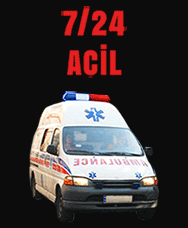Abstract
Objective: In this study, we aimed to describe the relationship between the localization of rarely seen upper extremity war injuries and their complications in the subacute period, and define our preferences for surgery and antibiotic use.
Methods: Patients with an upper extremity war injury who presented to our institution between 2015 and 2018 were retrospectively evaluated. Data regarding demographics, time between injury and presen- tation, location of injury, type of damage, complications, treatment methods, infection rates and antibi- otic use were recorded. Tissue defects, fracture fixation, neurovascular damage, infection development and treatment approaches were analyzed.
Results: Sixty-two male patients with isolated upper extremity injuries (mean age: 31.66 ±8.28 years) were included in the study. The average time between trauma and hospitalization was 14 days. The mean hematocrit (Hct) level at presentation was 36.3 ±6.8%. Patients had been followed up for an average pe- riod of 95.6 ±32.1 days. Twenty-nine patients (46.8%) had nerve injury, eight (12.9%) had arterial injury that required repair, and 23 had infection (37.1%), of which five developed osteomyelitis. Infection was polymicrobial in nine cases and monobacterial in 14. A positive correlation was found between the pres- ence of fracture and nerve injury ( p = 0.013). The frequency of nerve injuries due to gunshot wounds was higher in the mid-section and lower part of the arms and in the proximal forearm when com- pared to other regions ( p = 0.011). The infection rates were significantly higher in patients with fractures ( p = 0.033). The mean hematocrit (Hct) level at presentation of the patients with infection (32.1 ±6.3%) was significantly lower than that of those who did not have infection (38.8 ±5.9%) ( p < 0.001).
Conclusion: Upper extremity war injuries require case-specific solutions. Microbiological samples should be taken prior to empirical antibiotic treatment for infection management and rational antibiotic use principles should be applied according to the culture and antibiogram results. The holistic and ambiguous character of nerve injuries often requires early exploration and combined reconstructive interventions. Arterial injuries can be overlooked by physical examination alone and thus routine angiography should be performed. Completion of the bone and soft tissue reconstructions in the same session using a holistic approach minimizes the possible risks.









